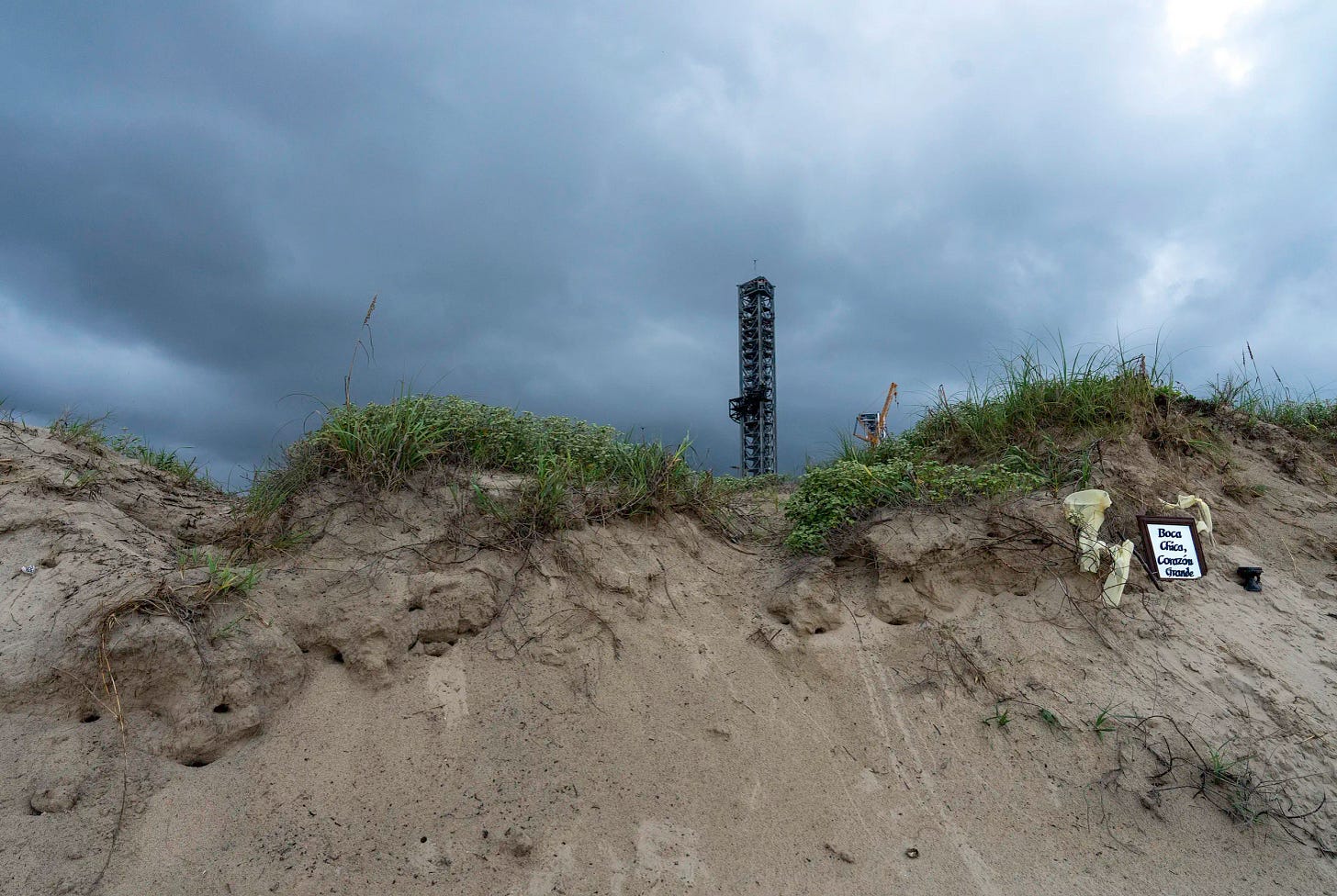⛪ California Bishop Suspends Mass Obligation Amid Immigration Raids
🚀🌴 SpaceX Gets Approval to Build Liquid Oxygen Plant Near South Texas Beach Despite Concerns 🌊 Kerr County flood disaster raises serious questions about emergency response gaps

🚀🌴 SpaceX Gets Approval to Build Liquid Oxygen Plant Near South Texas Beach Despite Concerns
Berenice Garcia, The Texas Tribune.- Cameron County officials approved a controversial SpaceX proposal to build a liquid oxygen plant less than 300 feet from South Texas dunes, sparking backlash from residents and environmentalists. The air separation facility, designed to reduce the need for truck deliveries from Brownsville, will produce liquid oxygen and nitrogen for use in rocket launches. Critics, including advocacy group Save RGV, say SpaceX hasn’t fully addressed environmental concerns, particularly the impact on coastal dunes and vegetation. Although the county imposed restoration conditions, opponents decried the rushed approval process and limited public input. SpaceX pledged to mitigate damage to over 8,000 square feet of dune vegetation but has not commented publicly. County officials defended the decision, citing revised construction plans that moved the facility 50 feet farther inland. The project reflects SpaceX’s expanding footprint in the Rio Grande Valley, intensifying tensions between economic development and environmental preservation.
📌 Key Facts
Project approved: Cameron County approved SpaceX’s permit with restoration requirements.
Location: Less than 300 feet from South Texas dunes, Boca Chica Beach area.
Facility specs: 20 buildings on 1.66 acres, including a 159-foot tower.
Purpose: To produce liquid oxygen and nitrogen for rocket launches.
Environmental impact: Over 8,000 square feet of dune vegetation affected.
Mitigation plan: SpaceX must restore dunes or face possible state enforcement.
Resident concerns: Limited public input, transparency, and environmental protection.
Activist response: Save RGV criticized local government for favoring SpaceX.
Construction shift: Facility moved 50 feet inland after initial opposition.
No comment from SpaceX: The company did not respond to media inquiries.
⛪ California Bishop Suspends Mass Obligation Amid Immigration Raids
Deepa Bharath, Associated Press.- In an extraordinary move, Bishop Alberto Rojas of the Diocese of San Bernardino has formally suspended the obligation for Catholics to attend Sunday Mass, citing the escalating fear in immigrant communities following federal immigration raids on church properties. The dispensation, typically reserved for crises like the COVID-19 pandemic, comes after U.S. immigration officers detained individuals on two parish properties, spreading panic among parishioners, many of whom are undocumented. Rojas, himself an immigrant from Mexico, said the fear of arrest is keeping people from attending services and called the recent federal tactics a violation of Gospel values. His diocese, the fifth-largest in the U.S. and second-largest in California, serves more than 1.5 million Catholics, most of them Latino. While other dioceses have taken steps to support fearful parishioners, none have gone as far as issuing a formal dispensation. Faith leaders praised Rojas’ decision as a bold act of moral leadership at a time of deep anxiety and vulnerability in immigrant communities.
📌 Why This Matters
Unprecedented move: First known formal Mass dispensation tied directly to immigration enforcement.
Widespread fear: Detentions on parish grounds erode trust in the Church as a sanctuary.
Moral statement: Reflects broader faith-based resistance to aggressive immigration tactics.
Impact: Reinforces the role of religious institutions as defenders of human rights and dignity.🌊 Kerr County flood disaster raises serious questions about emergency response gaps
Emily Foxhall, The Texas Tribune.- Federal weather officials gave a 3-hour, 21-minute window from the time of the first flash flood warning in Kerr County, Texas, to when deadly floodwaters surged — yet the timeline of local emergency action remains murky. Despite escalating alerts, including a rare flash flood emergency warning, residents were caught off guard in the early hours of the July 4 weekend. With over 90 dead and many still missing, this tragedy has become one of the deadliest flash floods in Texas history. While the National Weather Service followed standard procedures and increased warning intensity throughout the night, local officials have not explained what, if any, coordinated response took place during the critical window. Cell service, alert fatigue, lack of public understanding about weather terminology, and weak alert dissemination have all been identified as factors in the failure. Local officials have offered few answers as the community grieves and demand accountability grows.
📌 Why This Matters
High death toll, unanswered questions: Over 90 lives lost, many of them children, in an area with historical vulnerability to flash floods.
Breakdown in the “last mile”: Despite accurate forecasts and warnings, alerts may not have reached residents — or weren’t acted on by local leaders.
Lack of preparedness: Key officials like the mayor were unaware of flooding until hours after the first warning; public alerts were issued late.
Broader implications: Reflects a persistent national issue where timely warnings don’t translate into life-saving action due to outdated communication systems or institutional inertia.




